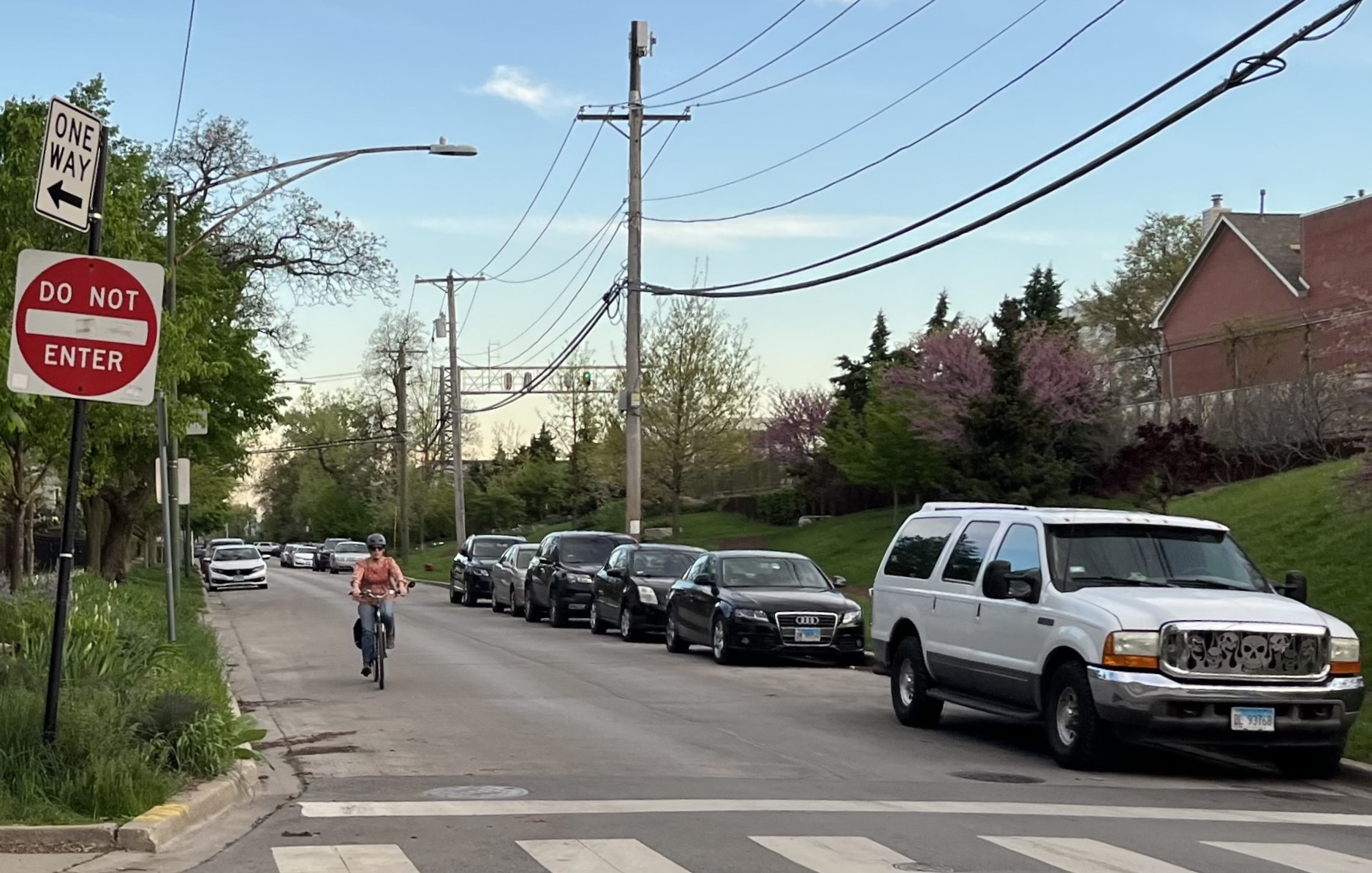$287K verdict shows using flimsy posts to “protect” lanes puts cyclists, taxpayers at risk
4:06 PM CDT on April 20, 2022
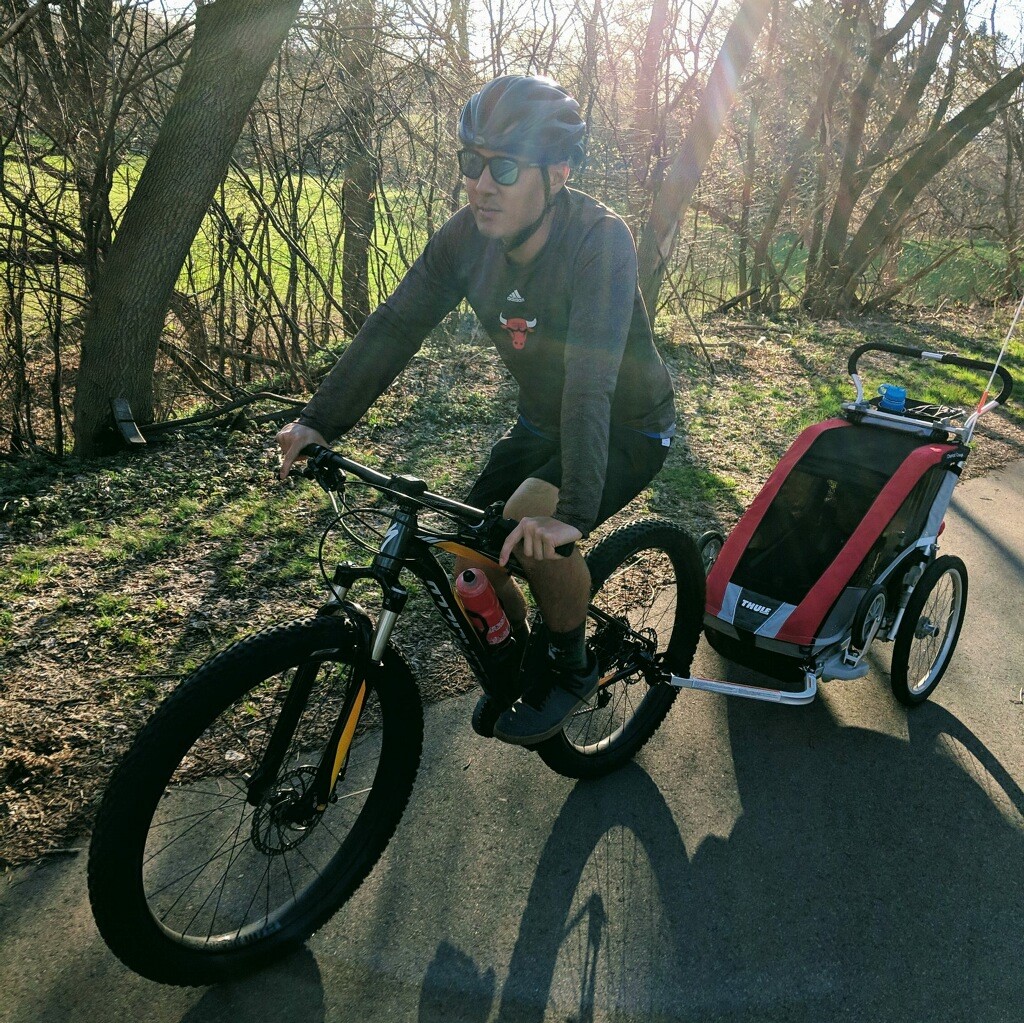
Sebastian Ko, who suffered a “shattered” kidney after he wiped out on a broken bollard on Milwaukee Avenue. Photo: Provided
Yesterday a jury awarded more than $287,000 in damages from the city of Chicago to a man who was grievously injured in a 2016 bike crash after he struck the base of a broken bike lane bollard on Milwaukee Avenue in West Town.
This case, along with a very similar local bike injury collision less than a year later on the Near West Side, highlights why the Chicago Department of Transportation, and all other city DOTs, should stop using these flexible plastic posts to delineate "protected" bike lanes. Not only do these flimsy installations fail to provide physical protection from drivers, but the common phenomenon of decapitated bollard bases creates a new hazard. Moreover, this cheap treatment is "pennywise but pound foolish," because it leaves taxpayers on the hook for injury lawsuits against the city government.
The October 2016 crash on Milwaukee Avenue
According to bike attorney Brendan Kevenides of FK Law (a Streetsblog Chicago sponsor), on Saturday, October 29, 2016 at 9:30 a.m., his client Sebastian Ko was biking northwest with his wife in one of the bike lanes on Milwaukee, Chicago's busiest cycling street. Near a U.S. Bank branch at 745 North Milwaukee, about a block southeast of the Milwaukee/Chicago/Ogden intersection, his wife saw a CTA bus stopped in the bike lane, so she pulled to the left to get around it, and Sebastian Ko did the same.
That's when Sebastian Ko struck the round base of one of the flexible plastic posts delineating the bike lane, Kevenides said. A motorist had previously broken off the shaft of the bollard, which lay in the gutter, but the base was still bolted to the road. Ko went over his handlebars, and the bars impaled the left side of his abdomen, "shattering" one of his kidneys, according to medical professionals.
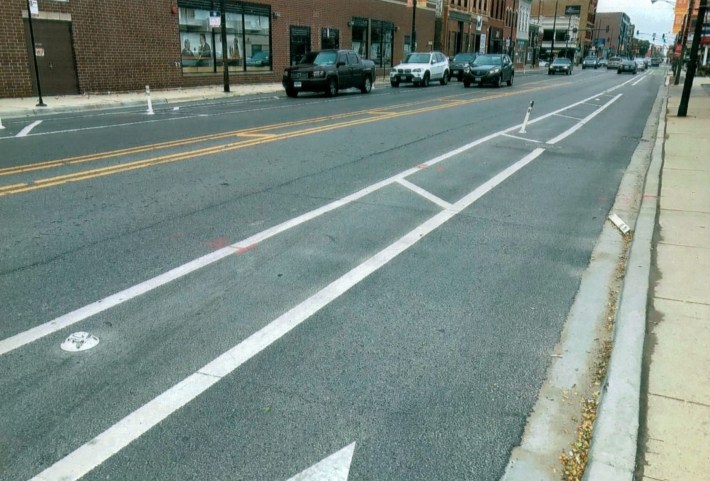
Kevenides said Ko had two surgeries, and after eight months of recovery he returned to normal activities, but the top half of of the damaged kidney atrophied, and the organ only retained half of its function. (Fortunately humans can live a healthy life with only one functioning kidney.)
Ko retained FK Law, which filed a lawsuit against the city of Chicago for failing to maintain the bike lane, Kevenides said. The suit also named the city's engineering consultant TY Lin International Group as a defendant for "engineering malpractice," because the flexible posts were set about 40 feet apart, which the law firm argued was insufficient to keep motorists from driving in the lanes.
The Chicago Department of Transportation didn't immediately respond to a request for comment on the case.
According to Kevenides, in its defense the city's law department cited the early 1990s Illinois supreme court ruling on the Boub Versus Wayne case, which found that bike riders are "permitted" but not "intended" users of roadways unless they are riding in a designated bikeway. The city's attorneys argued that the the city was immune to liability liable for Ko's injury because the striped buffer where the flexible posts are installed is not the intended location for cyclists to ride – they're supposed to pedal to the right of the buffer.
However, Kevenides said that during the Ko trial current and former CDOT bikeway planners and engineers Mike Amsden, David Gleason, Nathan Roseberry, and David Smith testified that it's common for people on bikes to have to cross the striped buffer of protected bike lanes for many reasons, such as to get around obstacles in the lane. (Disclosure: I was a coworker of Amsden and Gleason at the CDOT bike program in the early-to-mid 2000s, when I worked on bike parking projects.) They also acknowledged that it's common for drivers to take out the plastic posts.
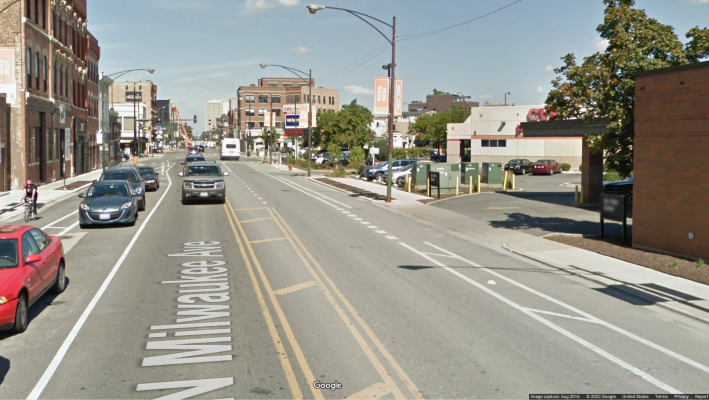
Kevenides told me the firm had no evidence that CDOT was aware that the post in question was broken before Ko struck it. However, the attorney argued that the department should have know about the "fallen soldier" and replaced it, because a Google Street View image captured in August 2016, about two months before the crash, shows the bollard was already broken. Kevindes said replacing the bollard would have cost the city about $100. Concrete curb protection was added to this stretch of Milwaukee in August 2018, although the location where Ko was injured still only has flexible posts.
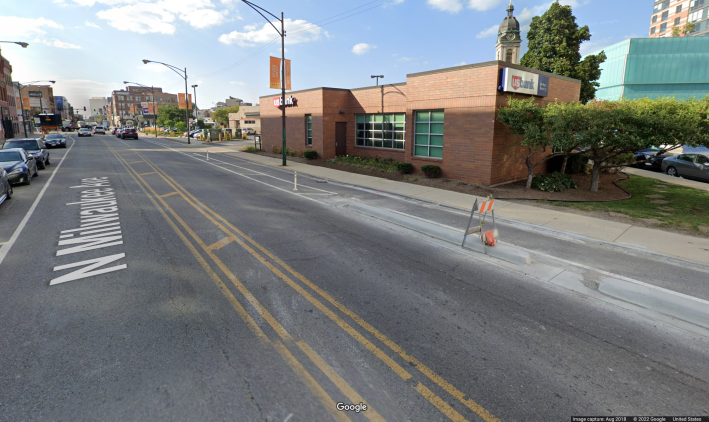
Yesterday's jury verdict in Ko's favor took place in the at the Circuit Court of Cook County's law division, in a courtroom presided over by Judge Tom Lyons, whom Kevenides said was "fantastic." The attorney added that the city is appealing the decision, "So the case still has a ways to go."
"The city is seeking greater immunity from responsibility than they currently have," Kevenides added. "Our hope is to defeat that, and hopefully see Boub Versus Wayne overturned."
The July 2017 collision at Roosevelt and Halsted
Ko's crash has several parallels with another case FK Law took on several months later. On Sunday, July 16, 2017, a 23-year-old male delivery cyclist (he hasn't authorized the firm to provide his name) was riding south in one of the Halsted bike lanes. as he approached Roosevelt, a driver crossed the bike lane to enter the right-turn lane, obstructing the bike rider's path.
Like Ko, the delivery biker pulled to the left into the striped buffer to get around the obstacle, and he too struck the base of a broken bollard. The delivery cyclist crashed, breaking one of his arms.
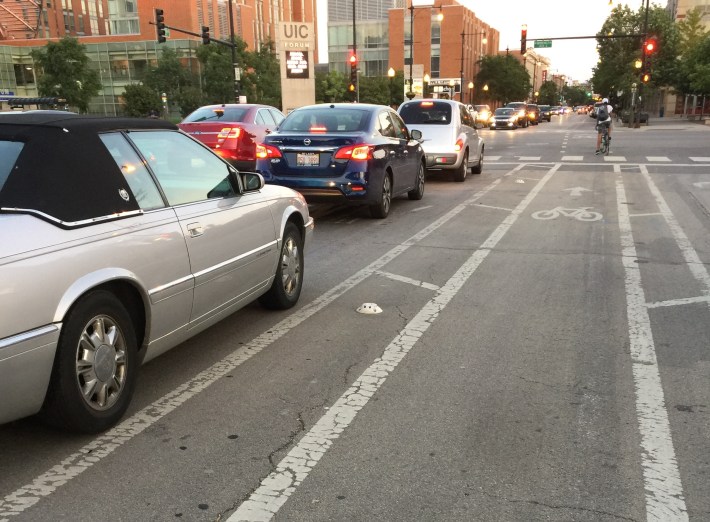
As with the Ko case, for the 2017 incident FK Law filed a lawsuit against both the city and TY Lin, the engineering consultant. As it happens, I was summoned to give a deposition for that case because of a 2012 article I wrote for Streetsblog Chicago's predecessor the transportation news website Grid Chicago, which quoted then-CDOT bikeway planner Mike Amsden as saying flexible posts were intended as a temporary treatment.
“You know, it’s been our intention all along to remove posts where we can," Amsden told me at the time. "It’s a cost savings, it’s a maintenance issue if we have a ton of posts out there and have to keep replacing them... The city made the decision to start out with the flexible, plastic posts, which cost about $90 each installed, rather than more durable, but more expensive, concrete infrastructure, in order to build many miles of protected bike lanes ASAP.”
Ultimately the city refused to compensate the delivery cyclist, but TY Lin agreed to an undisclosed settlement, which is sort of the opposite of the outcome of the Ko verdict.
The takeaways from these two cases.
Kevenides noted that CDOT used flexible posts on both Milwaukee and Halsted because it was an inexpensive and quick method of creating a "protected" bike lane. "But this was foolishly cheap – it was not a smart money-savings for taxpayers," he argued, because the city is supposed to pay Ko hundreds of thousands of dollars for his injury.
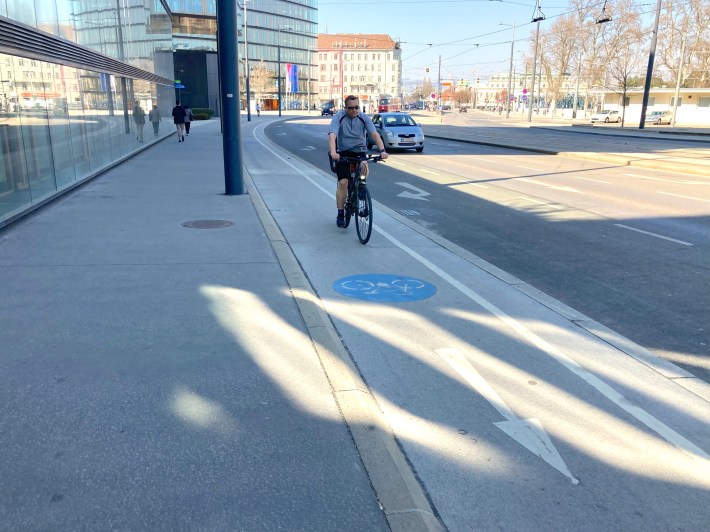
The ultimate solution is for for the city to stop using the flimsy posts, which do little to actually protect cyclists, and instead make robust barriers such as concrete curbs the default for bikeway protection. (Kevenides noted that it's important for the curbs to be brightly colored, or else they can actually be a hazard for cyclists and other road users.) Better yet, Chicago should switch to installing raised bikeways, like the one pictured above, which take up the same footprint as on-street curbside protected lanes, but are much less susceptible to blockage by drivers and drainage problems.
Hopefully the verdict in the Ko case will at least result in CDOT doing a better job of maintaining its existing flexible-post-delineated bike lanes. "The city now has notice that if bike lanes are in disrepair, it is going to be held responsible for any harm caused as a result," Kevenides said.
In addition to editing Streetsblog Chicago, John writes about transportation and other topics for additional local publications. A Chicagoan since 1989, he enjoys exploring the city on foot, bike, bus, and 'L' train.
Stay in touch
Sign up for our free newsletter
More from Streetsblog Chicago
Due to incredible support from readers like you, we’ve surpassed our 2023-24 fundraising goal
Once again, the generosity of walk/bike/transit boosters is fueling our reporting and advocacy.
Which Metra corridor would become more bike-friendly and greener under a new plan? Ravenswood!
Thanks to plans to convert little-used parking spaces, the avenue is slated to get a new bike lane, and the Winnslie Parkway path and garden will be extended south.
They can drive 25: At committee meeting residents, panelist support lowering Chicago’s default speed limit
While there's no ordinance yet, the next steps are to draft one, take a committee vote and, if it passes, put it before the full City Council.


